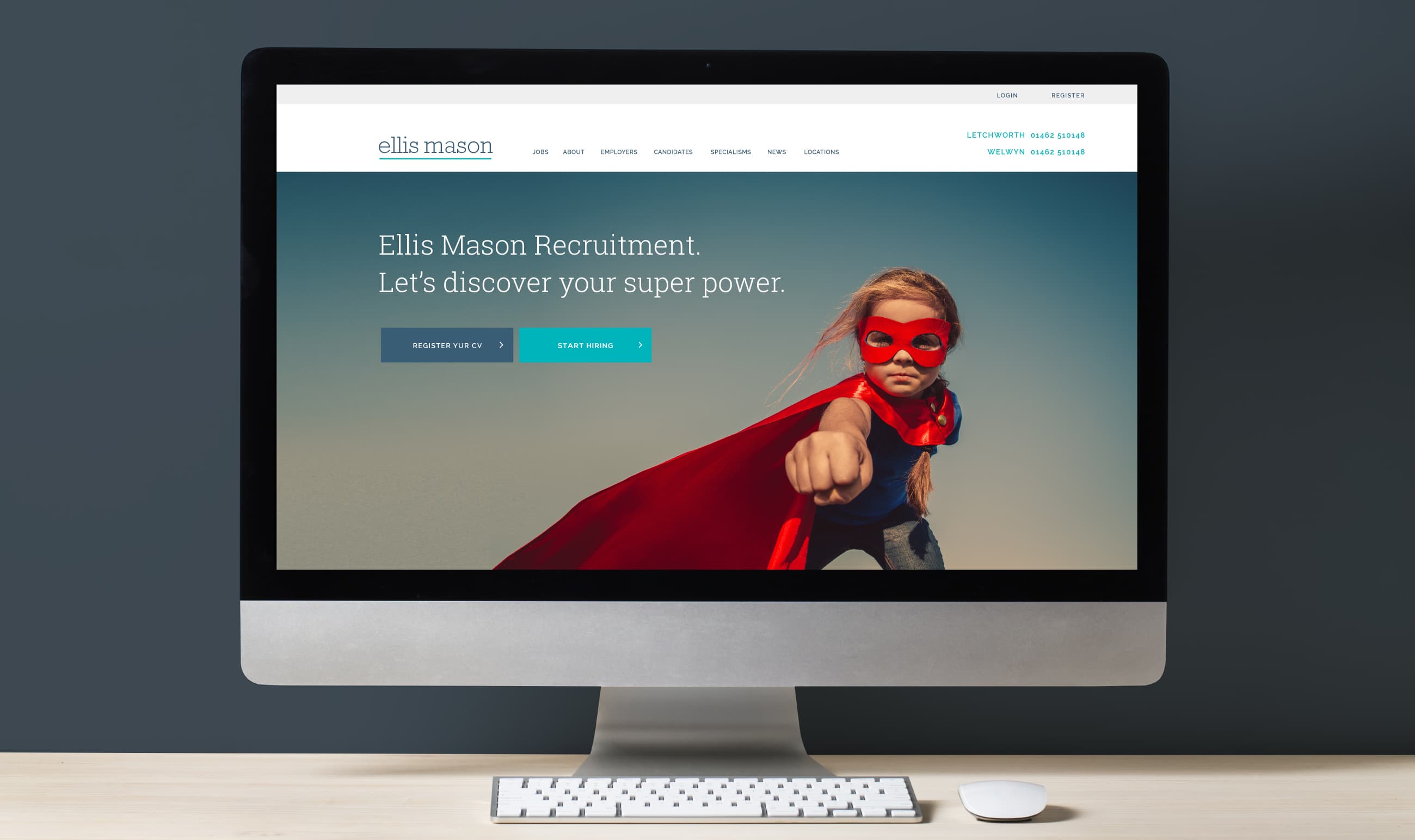The ultimate guide to brand identity design
table of contents
Having a strong brand identity is not something that happens organically. You’re not going to stumble onto a logo or create something meaningful by randomly picking colours. You need to approach your brand identity design with a strategy to create something that reflects your business and brand.
Your brand should support your business growth, but getting it exactly right is a challenge. Using a professional brand identity design developer can deliver results with minimum fuss, nurturing your brand identity much more easily than if you try to do it yourself.
It’s not easy work, but it is essential if you want to power your brand to new success.
For you to understand the process of developing a rich brand identity, we’ve broken down the process into the following guide. We’ll step through everything there is to know about brand identity design and how you can use it to appeal to customers and stand out from your competition.
What is brand identity design and why is it important to a business?
Business owners often make the mistake of thinking a brand identity is their logo. That’s just one part of the equation because your brand identity should be a complete vision of your business. Yes, that means everything from your website styles, uniform colour schemes, colour palette, and more.
Brand identity design is the complete brand message you are projecting to customers and rivals. It is a comprehensive visual representation of your business. Your brand identity drives how customers perceive your brand and how they feel about it.
A consistent brand identity speaks of your values, business culture, and position in the market.
Why Do You Need a Brand Identity?
It’s easy to dismiss the importance of brand identity design and instead focus time and resources on marketing. Sure, properly marketing your business is essential, but so is having a strong brand identity. In fact, your brand is a constant part of your marketing strategy that serves as a calling card to customers.
So, does that mean getting a beautiful design is the key to a successful brand identity? Not entirely… while design is a useful tool, it only works if it effectively communicates your business. This is where brand identity design can be powerful, linking design and your brand vision in the following ways:
- Market Differentiation: Your brand identity can help you stand out from the crowd. No matter how you market yourself, your brand can differentiate you from your competition.
- Connection: If your brand can effectively communicate who you are, the easier it will be to tap into consumers and engage directly with them.
- Experience: One of the goals of a brand is to create a consistent customer experience built on a cohesive identity. Your brand should be all-encompassing across your website, physical operations, social media, marketing output, etc.
What Does a Brand Identity Include?
Brand identity comes from a toolbox of visual components that help you to communicate your business vision. When you use brand identity design techniques, you are making your brand creation more effective.
How complex or simple the visual elements of your brand identity should be depends on your specific needs. Still, there are core components that should be a part of every brand:
- Logo
- Typography
- Colour palette
You can add nuance and variety to your brand identity design by choosing additional components to highlight your brand, including:
- Photography
- Iconography
- Illustration
- Data visualisation
What makes a successful brand?
If you have a brand identity, does that mean it’s time to watch those new customer conversions roll in? Maybe not. There’s a difference between having a brand identity and having a successful brand identity. Even if you have covered all design components, your brand may not help your business thrive.
By using strong brand identity design, you can create a brand that works for your business and the people who engage with it. Getting that successful brand identity is a challenge, which is why it helps to work with a brand design agency. Working with a professional will help transform your brand in the following ways:
- Distinct: It needs to be unique enough to stand out in a crowded market.
- Attention-grabbing: The visual impact of your brand design needs to be lasting. It should grab the customer’s attention and be memorable long after.
- Scalable: Your brand identity must work alongside the growth of your business.
- Flexible: Your brand must function across all outlets (print, digital, etc.), as well as across platforms and devices.
How to create your brand identity in 5 steps
You now already know the basics of what makes an outstanding brand identity. However, if you want to drive your business further, you’ll need to know how to take advantage of that knowledge and develop a unique brand identity design. The following steps will help you through each stage of the process:
Know your customer
Do you know your target customer and/or audience? You’d be surprised how many businesses do not understand their customer base. Before moving on to your brand identity, it is essential to know who you are trying to speak to. Once you know your target customer, it is easier to develop your brand towards them. Demographics and psychographics are excellent ways to define your customers based on age, gender, usage, digital profile, consumer habits, and other factors.
While you may already understand demographics, the concept of psychographics is perhaps more obscure. In simplest terms, this is classifying people based on their goals and attitudes. Demographics may provide you with an overview of facts about your customers (age, gender, location, etc.), but you can also learn how they behave.
Develop a value proposition
How does your business stand out from the competition? It is almost impossible to be utterly unique, so there’s certainly other companies competing in your space. How you differentiate your business will become the core selling point of your brand identity. Your value proposition should be one or two sentences that clarify what your business does and why it appeals to customers.
For example, if you sell affordable books online, your business is in a busy market against massive competitors like Amazon. A value proposition that says “MyBookBusiness sells books” is hardly going to appeal to customers. Instead, something like “MyBookBusiness sells the best new books and modern classics at affordable prices” is more dynamic and appeals more directly to your customers.
Pick your colours
While this may seem like the easiest step, it is surprisingly complex. Simply choosing your favourite colour as your brand identity design is not going to work. Instead, you should weigh up your target customer and value proposition before choosing a colour that best matches those aspects of your brand.
One golden rule of brand identity design is you should use no more than three colours. You can probably think of some major brands with more, but just think about how many classic brands have just two to three colours. What colours are common in your industry? Do proper research and remember your brand colours will be the first point of contact with most customers.
Design your logo
Your colour choice and logo go hand-in-hand. Yes, there are many factors that go into brand identity besides your logo, but there’s no doubt your logo will become something your customers identify you with. You want people to be able to spot your logo quickly and immediately understand what it is.
Think of the most famous logos, they convey directly what the company is efficiently and without using many colours. Unless you are an artistic whiz, you should outsource your logo design to a professional agency. While you cut costs taking a DIY approach, a professional logo could help to set your business apart and will be with you for years to come.
Build a style guide
Once you have all the elements of your brand in place, it is time to ensure your brand identity is universal across your business. This means the same brand identity design across all facets of your organization, including uniforms, communication, website, social media, business cards, and more.
The best way to ensure universal brand identity is to develop a style guide that your teams use across your business. Specifics of a style guide are unique to the business/industry, but it will include the placement of design elements, how to use your logo, which fonts to select, and other factors.
Why creative, bespoke design is important
Building a strong brand identity can be complex, it can also take resources and time. There’s no doubt businesses have the temptation of ignoring brand identity design. However, if you decide to skip this step your brand will suffer, and your business could struggle to grow. When you employ bespoke design, you get significant unique, focused, and considered branding that outweighs the costs and time of developing a robust brand identity:
Unique = A memorable brand that speaks to customers.
Focused = Clear understanding of your brand goals and outcomes.
Considered = A future-ready brand that will function across your business and sub-brands.
Heading to a logo library and selecting one of the thousands of options is not good enough. While this is fast and cost-effective, you will not have a unique brand identity that tells your story. You should also avoid trying to chase fads and trends. Yes, you can get major short-term benefits, but fads fade over time and your brand identity design could be left looking out-of-date.
Instead, developing a professional and quality brand identity inspires your customers and connects with them on an emotional level. Your brand is your story and an ongoing journey that your customers will be eager to be part of.
Our brand identity design process
With the information above, you can build a brand identity on your own, creating something that is truly yours. However, if you want the best possible results with minimum fuss, using our brand identity design process is an excellent choice. Certainly, if you have no brand-development experience, working with our team of experts can drive your brand identity to the next level.
We consult with our clients and collaborate throughout the process to ensure the best results. Through our consultations and research, we can provide the following stages of brand identity design:
Research stage
- Position your business and/or service
- Define your business goals and your target customer
- Provide rich research and analysis on competitors
- Futureproof your brand identity
- Help to define your business DNA and brand personality
- Create mood boards to research and develop design direction
Design stage
- Produce design concepts before final draft
- Develop a design guide of colour, fonts, monograms, images, logos
Pattern styles
- Highlight how your brand identity design functions across formats (large/small screens, print, digital, livery, signage, etc.)
Development
- Present concepts and work with your feedback to improve designs
- Considering your ideas and/or concerns and tweak designs to meet your expectations
- Produce the final brand identity design
Brand guidelines
- Develop your brand style guide showing the use of imagery, fonts, and other rules and regulations.
Final files
- Supply the final artwork designs and imagery, and provide ongoing support
Conclusion
Brand identity design is one of the most significant decisions you can make for your business. No matter the size of your organsation, having a strong brand identity is a valuable tool for effectively engaging with customers. Your brand will come to define your business, from the packaging on your products to the logo on your social media. That is why taking the time to develop a strong brand identity is an important investment for your business.
Get professional brand identity design
Collaborating with our team to develop your brand identity design is the best way to propel your business to new levels of growth. We work with companies of all sizes and help them to achieve their branding goals. Not only do we develop every stage of brand identity, but we also provide a complete support system for your brand.
Whether it is the logo, colours, imagery, or style guides, our comprehensive approach means you get the best results for your brand. Our services include:
- Name Generation
- Logo Design
- Corporate Identity
- Brand Refresh
- Brand Guidelines
- Artwork Files
- Copywriting – establish a consistent tone of voice
Discover more about our branding services today.



